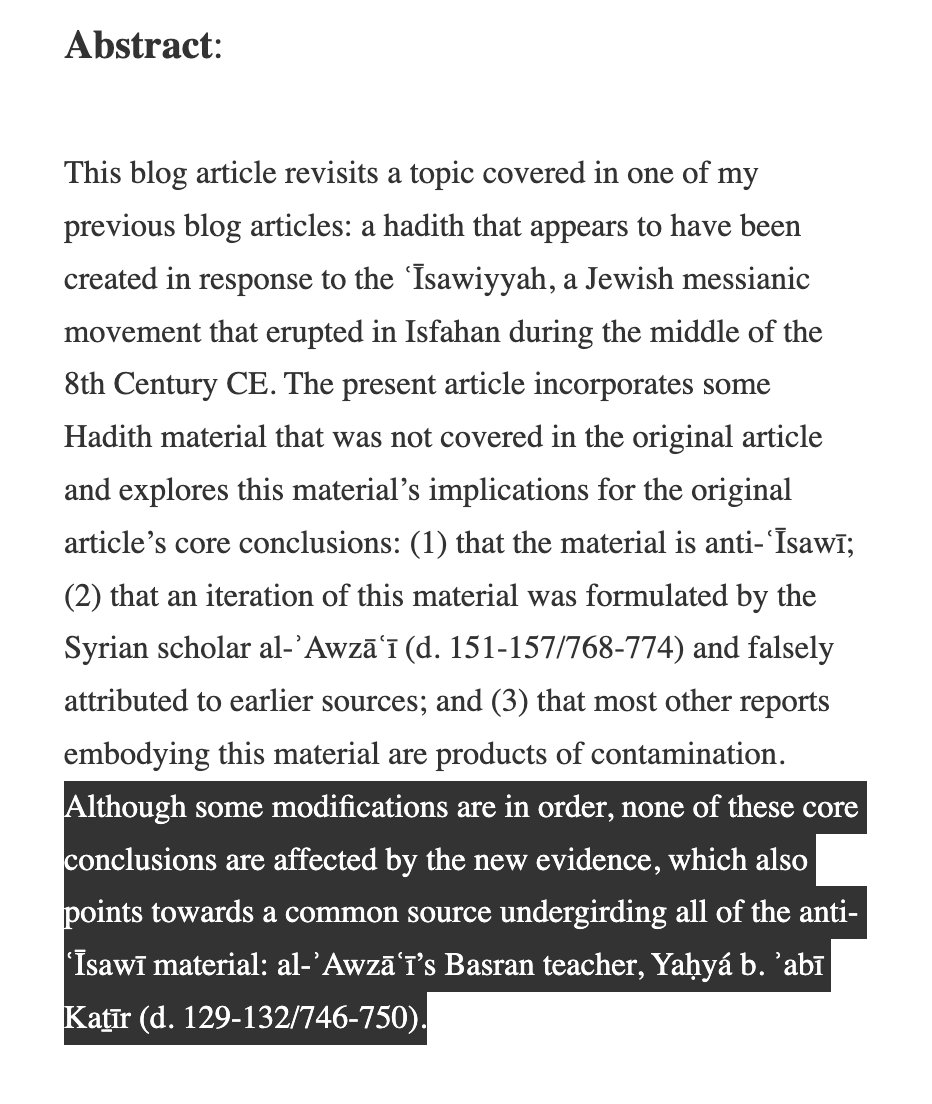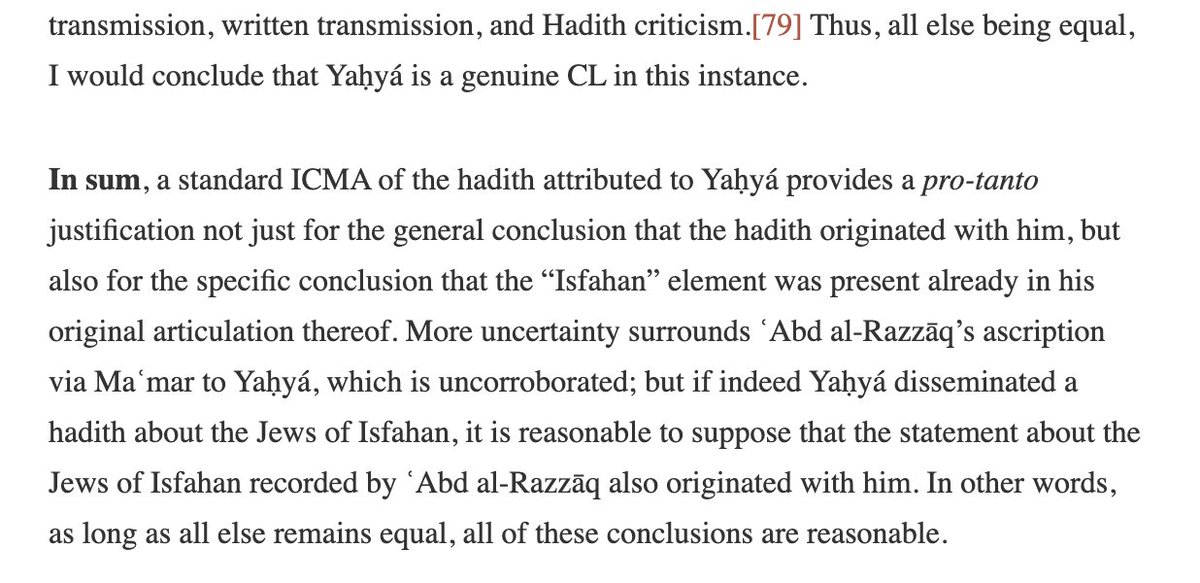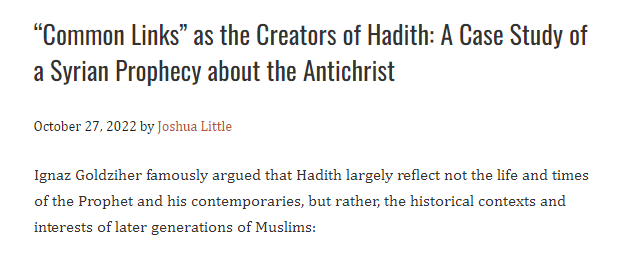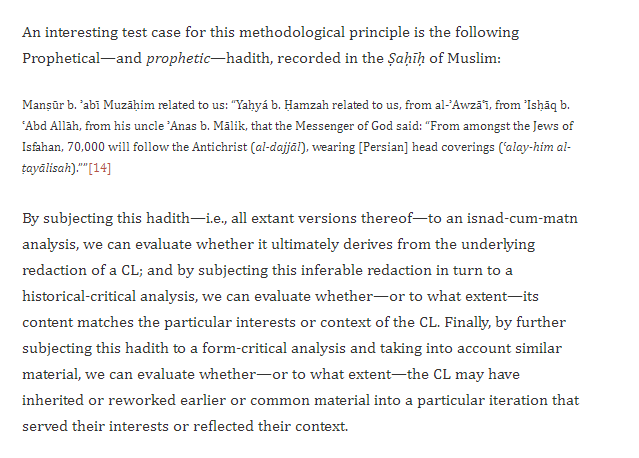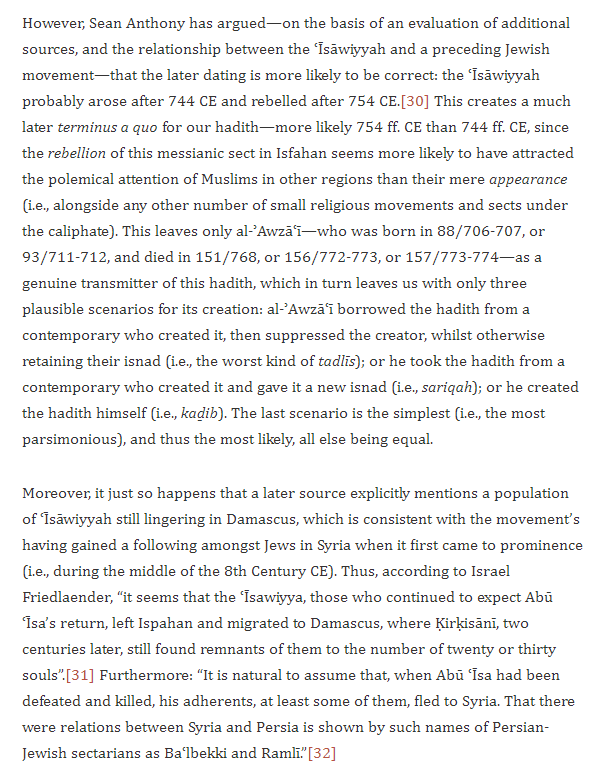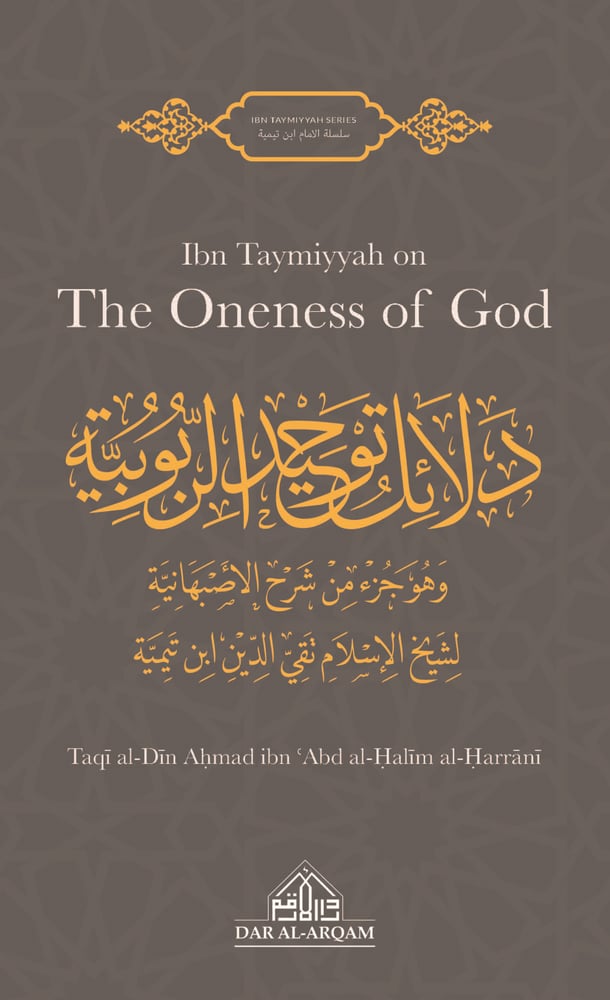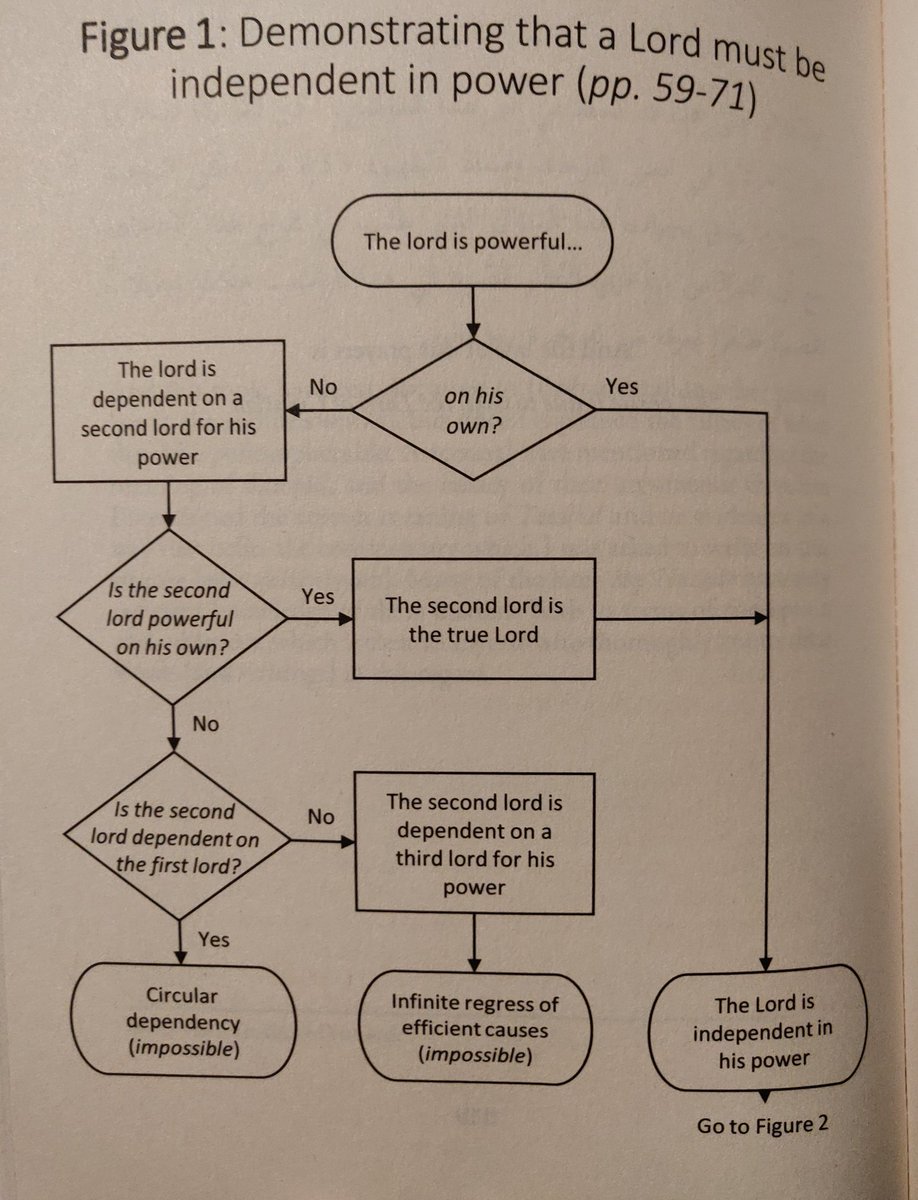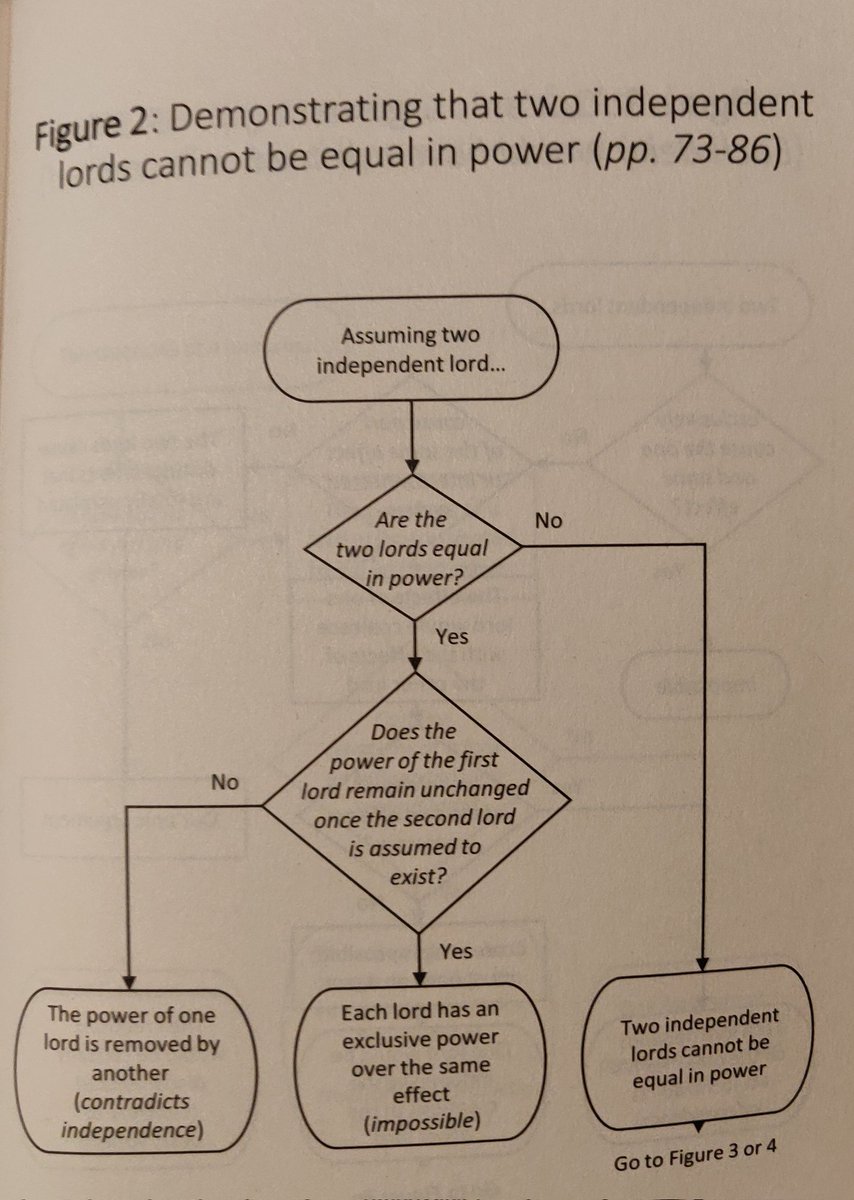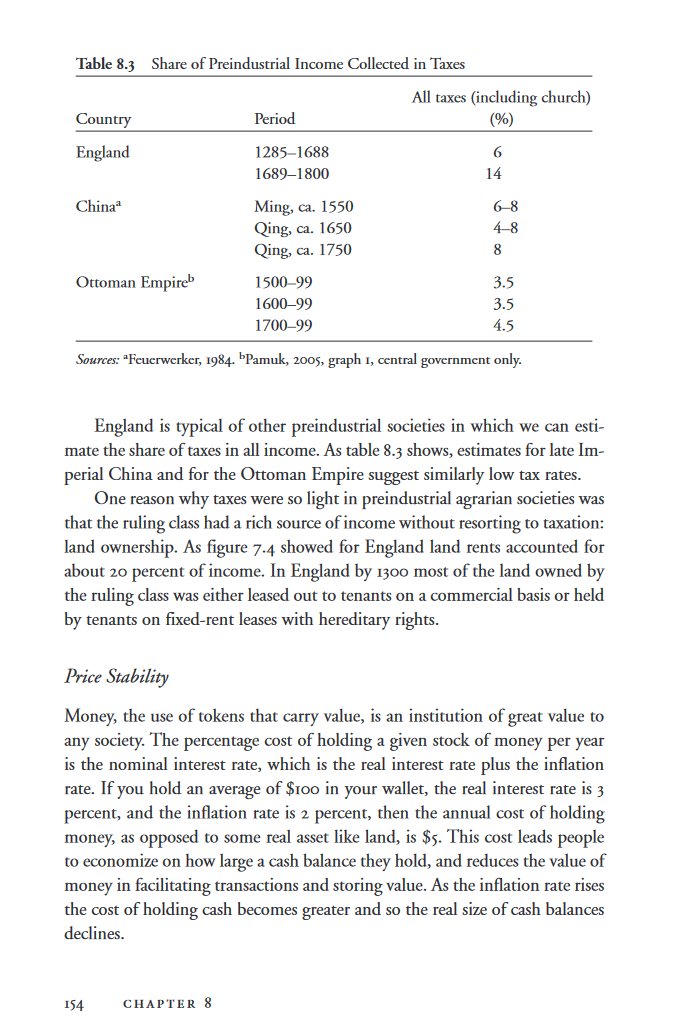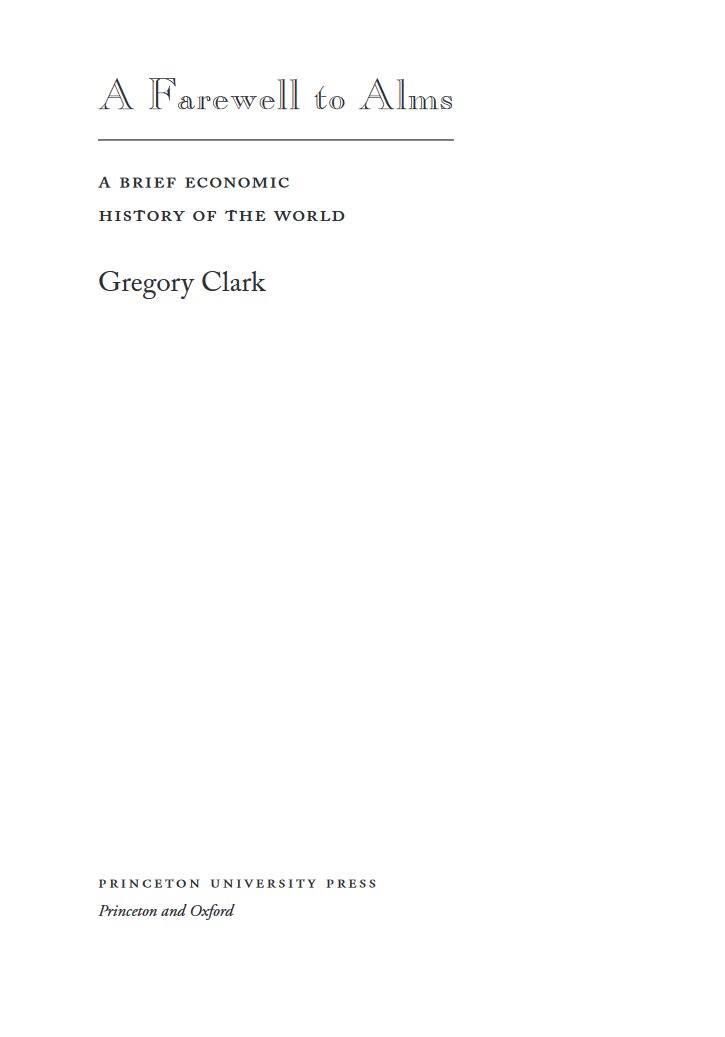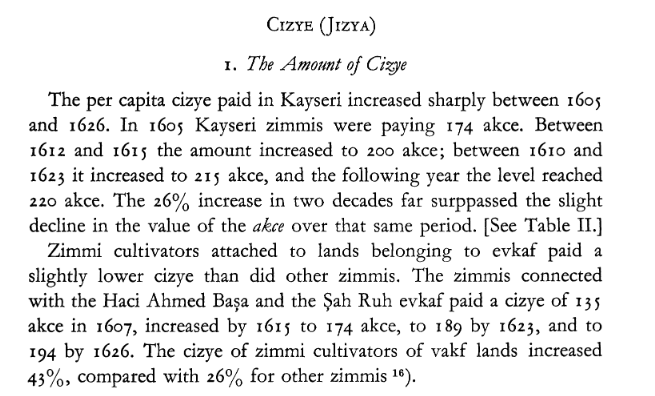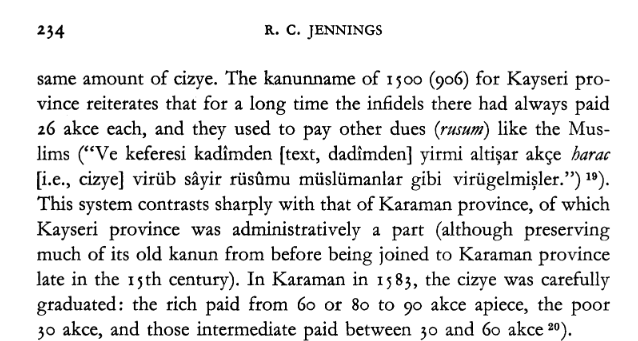[Thread]
"They took their rabbis and their monks to be their lords besides Allah..." [Qur'an 9:31]
Many scholars mention how this is about taking rulings from them that opposed what Allah revealed. Attached are screens taken from the abridged translation of tafsir Ibn Kathir

"They took their rabbis and their monks to be their lords besides Allah..." [Qur'an 9:31]
Many scholars mention how this is about taking rulings from them that opposed what Allah revealed. Attached are screens taken from the abridged translation of tafsir Ibn Kathir
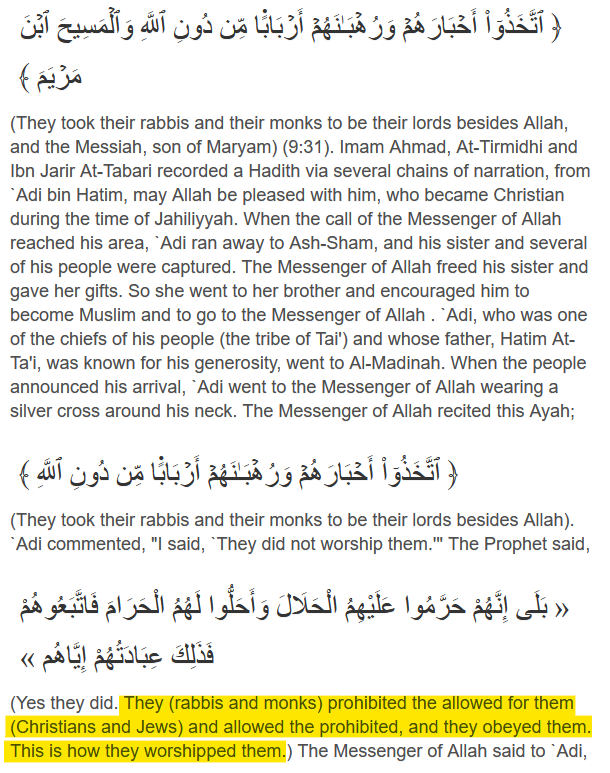
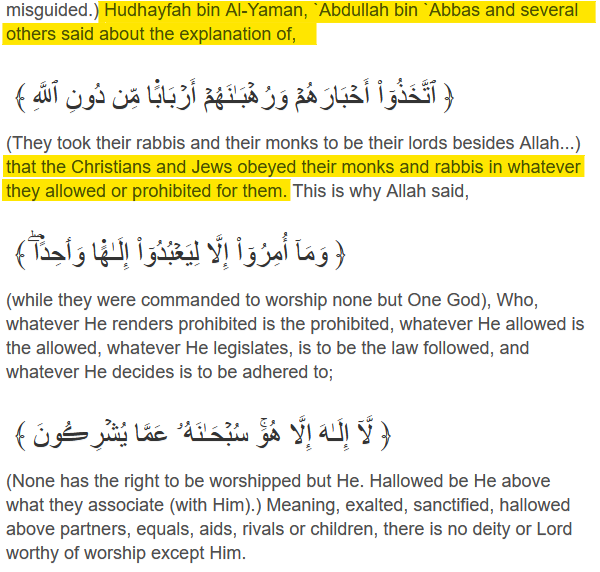
The famous Rabbi, Abba ben Joseph bar Ḥama, quoted in the Talmud as "Rava", is cited as saying that the words of the "sages" (ie, the authoritative rabbis) are more important than the revelation (Torah)!
Rava: en.wikipedia.org/wiki/Rava_(amo…
Screen source: sefaria.org/Eruvin.21b?lan…
Rava: en.wikipedia.org/wiki/Rava_(amo…
Screen source: sefaria.org/Eruvin.21b?lan…
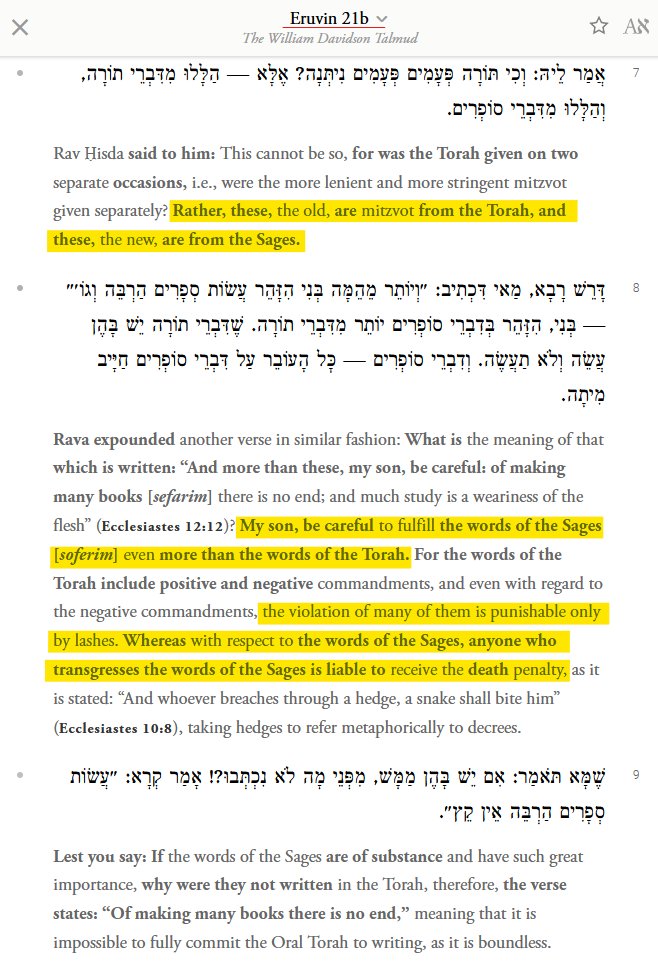
Note in the previous tweet, the top part of the screenshot also mentions the sages brought completely new mitzvot as well (ie laws, commands, prohibitions, etc)
The below text from another part of the Talmud also claims "a Sage is greater than a prophet"
sefaria.org/Bava_Batra.12a…
The below text from another part of the Talmud also claims "a Sage is greater than a prophet"
sefaria.org/Bava_Batra.12a…
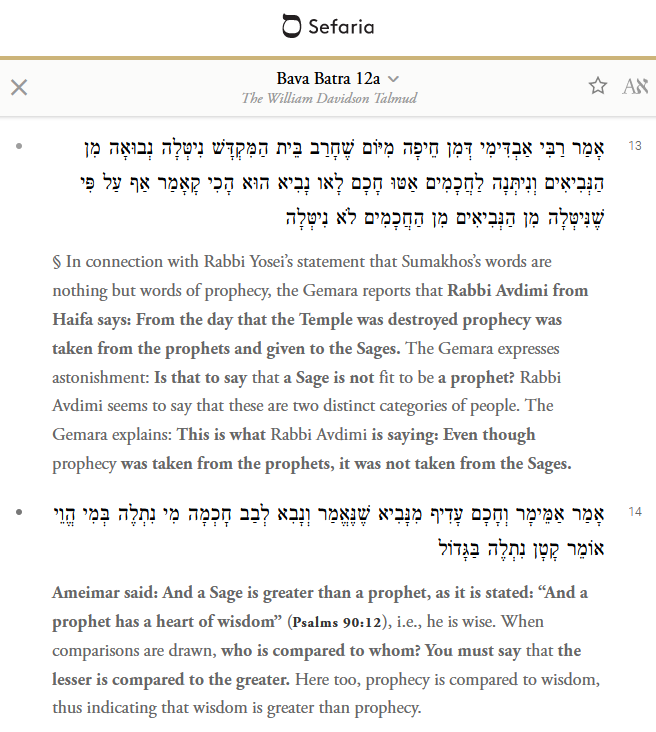
The Talmud itself says it is more virtuous to study it then to study the bible
sefaria.org/Bava_Metzia.33…
sefaria.org/Bava_Metzia.33…
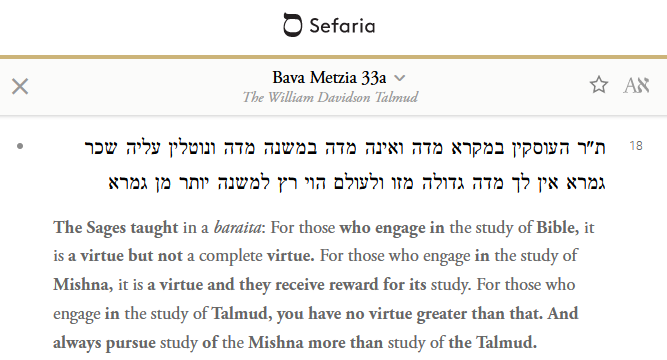
In Christianity, there are various practices that are against the bible, but deemed permitted, sometimes due to an infallible (ecumenical) council of bishops. Catholics openly defend prostrating to images (eg of Mary), despite the bible prohibiting it
newadvent.org/cathen/07664a.…



newadvent.org/cathen/07664a.…
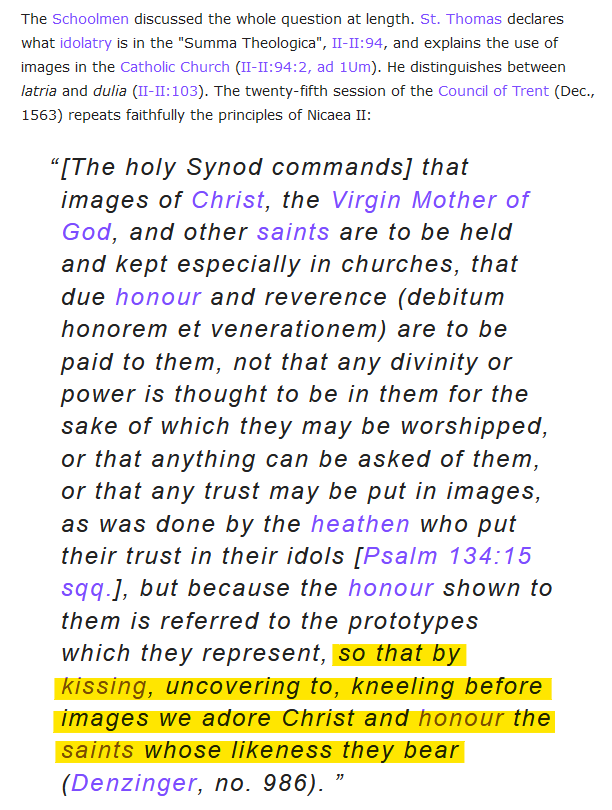
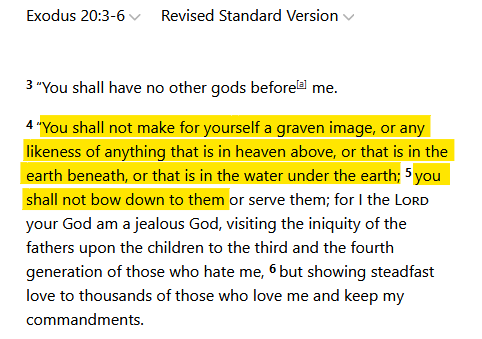
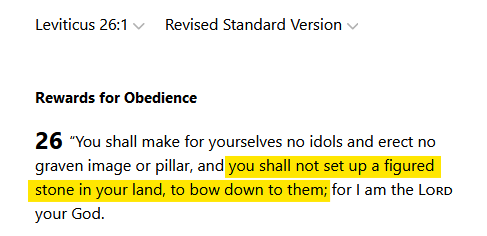
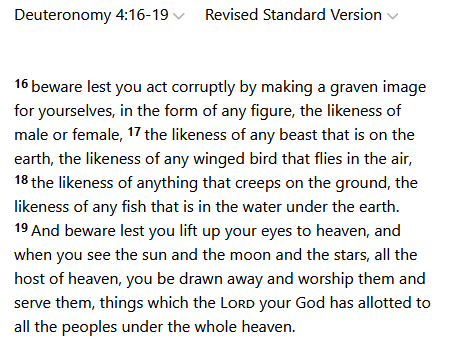
Even if we conceded that the prohibition is not for creating literally any image, it is clear that bowing down to images that have been installed in house of worship (eg a statue/icon of Mary) is a violation. But because of the 7th ecumenical council, many Christians allow it
One can bring forth numerous other examples, but this suffices. Indeed these folk distort words from their proper places 

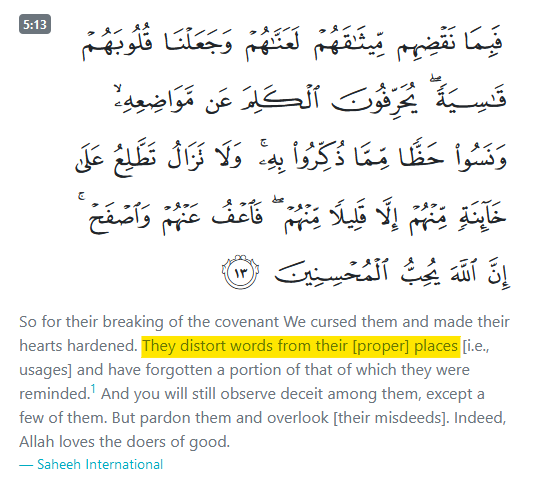
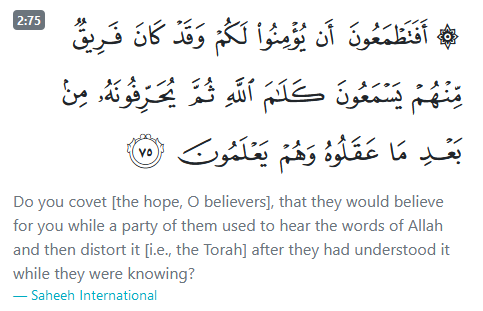
@JudaismUnveiled perhaps you'd have an interest in this thread
• • •
Missing some Tweet in this thread? You can try to
force a refresh


